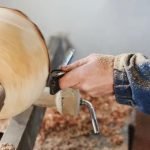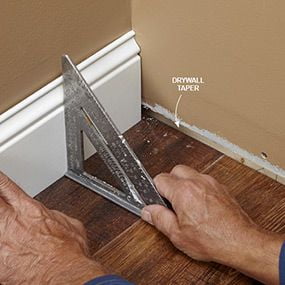Woodworking is a rewarding and fulfilling hobby or profession for many individuals, but it’s important to prioritize safety when working with wood. One crucial element of staying safe in the woodworking shop is choosing the right respirator. In this article, we will explore which respirator for woodworking is best suited for your needs, as well as provide important information on why respirators are essential for this craft.
Woodworking may seem like a harmless activity, but it actually poses several potential health risks that can affect your respiratory system. From inhaling sawdust and wood particles to exposure to harmful chemicals in finishing products, there are numerous dangers that woodworkers need to be aware of. This makes investing in a high-quality respirator a necessity for anyone working with wood on a regular basis.
There are various types of respirators available on the market, each designed to protect against specific airborne hazards. Understanding the differences between these options and knowing which one is best suited for woodworking will not only enhance your safety but also improve your overall working experience. In the following sections, we will delve into the different types of respirators, discuss NIOSH ratings, and provide tips for choosing the right fit to ensure both comfort and safety while woodworking.
Dangers of Woodworking
Woodworking is a popular and fulfilling hobby for many, but it also comes with potential health risks that should not be overlooked. The process of cutting, sanding, and shaping wood can release fine particles and harmful fumes into the air, which can be dangerous if inhaled. Some of the potential health risks associated with woodworking include respiratory issues, allergic reactions, and even long-term conditions such as chronic obstructive pulmonary disease (COPD) and various types of cancer.
One of the most effective ways to protect yourself from these health risks is by using a respirator while woodworking. Respirators are designed to filter out harmful particles and chemicals from the air before you breathe them in. This ensures that your lungs are protected from harmful substances that could lead to serious health problems down the line. However, not all respirators are created equal, so it’s important to choose the right one for your specific needs.
When it comes to woodworking, it’s crucial to select a respirator that provides both particle filtration and organic vapor protection. Wood dust and other airborne particles pose a risk to your respiratory system, while certain types of wood may emit organic vapors that can be harmful if inhaled.
A respirator with NIOSH-approved N95 or P100 filters is ideal for blocking out wood particles, while organic vapor cartridges provide protection against harmful fumes. Comfort is also an important factor when choosing a respirator for woodworking, as you’re likely to wear it for extended periods of time during your woodworking projects.
| Respirator Type | Protection Level |
|---|---|
| N95 Particle Respirator | Filters out 95% of airborne particles |
| P100 Particle Respirator | Filters out 99.97% of airborne particles |
| Organic Vapor Cartridge Respirator | Protects against harmful fumes from certain types of wood |
Types of Respirators
When it comes to woodworking, choosing the right respirator is essential for protecting your respiratory health. There are several types of respirators available on the market, each with its own unique features and benefits. In this section, we will explore the different options available, so you can make an informed decision about which respirator is best suited for woodworking.
Disposable Respirators
Disposable respirators are often the most budget-friendly option for occasional woodworking projects. These respirators are designed to be worn once and then discarded. They are typically lightweight and comfortable to wear, making them a convenient choice for short-term use. However, they may not provide as much long-term protection as other types of respirators.
Half-Face Respirators
Half-face respirators cover the nose and mouth and are equipped with replaceable filters to protect against wood dust and other airborne particles. They provide a more secure seal than disposable respirators, offering better protection for extended periods of woodworking. Some models also allow for additional filter cartridges to be attached for added protection against certain chemicals or fumes.
Full-Face Respirators
For maximum protection during woodworking activities, full-face respirators cover the entire face and provide a secure seal around the eyes, nose, and mouth. They offer both respiratory and eye protection in one unit, making them ideal for tasks that produce a significant amount of airborne debris. Full-face respirators are often favored by professional woodworkers or those working in environments with higher levels of dust or toxic substances.
Understanding the differences between these types of respirators can help you make an informed decision about which one is best suited for your woodworking needs. It’s important to consider factors such as comfort, level of protection needed, and ease of use when selecting a respirator for woodworking. Remember to prioritize safety by choosing a high-quality respirator that meets NIOSH certification standards for optimal respiratory protection while working with wood.
NIOSH Ratings
When it comes to selecting the right respirator for woodworking, understanding NIOSH (National Institute for Occupational Safety and Health) ratings is crucial. NIOSH ratings are an essential factor in determining the effectiveness and quality of a respirator in protecting the wearer from airborne particles and contaminants. These ratings provide consumers with a reliable way to compare different respirators and ensure that they meet industry standards for safety.
The NIOSH rating system categorizes respirators into different classes based on their filtration efficiency and oil resistance. The most common NIOSH ratings used for woodworking are N95, N99, and N100. An important point to note is that all NIOSH-approved respirators have undergone rigorous testing to verify their performance and are designed to provide a minimum level of protection which exceeds that specified by OSHA (Occupational Safety and Health Administration).
In summary, when choosing a respirator for woodworking, it is important to prioritize models with NIOSH certification. This ensures that you are getting a high-quality product that has been tested and approved by experts in occupational safety. By understanding these ratings, woodworkers can make informed decisions about which respirator will provide them with the best protection while working with wood and other materials.
| NIOSH Rating | Description |
|---|---|
| N95 | Filtration efficiency of at least 95% against non-oil based particles |
| N99 | Filtration efficiency of at least 99% against non-oil based particles |
| N100 | Filtration efficiency of at least 99.97% against non-oil based particles |
Choosing the Right Fit
When it comes to woodworking, choosing the right respirator is crucial for ensuring both comfort and safety. Woodworking processes can produce a variety of airborne particles and chemicals that can be harmful to your respiratory system. In this section, we will explore some key considerations for choosing the right respirator for woodworking, which will help you stay protected while working with wood.
Fit and Seal
One of the most important factors to consider when choosing a respirator for woodworking is the fit and seal of the mask. A proper fit is essential for ensuring that no airborne particles or fumes can enter through gaps between your face and the respirator. Look for respirators with adjustable straps and nose pieces that can be molded to fit your face snugly.
Comfort and Breathability
Woodworking projects often require extended periods of wear, so it’s important to consider the comfort and breathability of the respirator. Look for models with padded straps, lightweight materials, and good ventilation to ensure that wearing the respirator doesn’t become a burden during long hours in the workshop.
Filter Efficiency
Consider the type of filtration needed based on the specific woodworking tasks you’ll be undertaking. For example, if you’re working with wood that produces fine dust particles, you’ll want a respirator with efficient particle filtration. On the other hand, if you’re using finishes or coatings that produce chemical fumes, look for a respirator with appropriate chemical filtration capabilities.
By carefully considering these factors in relation to your individual needs as a woodworker, you can select a respirator which not only keeps you safe but also ensures your comfort during working hours. Remember that prioritizing safety in woodworking means investing in quality respiratory protection equipment.
Best Respirators for Woodworking
Woodworking involves exposure to various airborne particles and dust, making it essential to invest in a high-quality respirator for protection. When selecting the best respirator for woodworking, it’s crucial to consider factors such as filtration efficiency, comfort, and fit. Below are some top picks and recommendations for respirators that are well-suited for woodworking projects:
3M 7502 Half Facepiece Reusable Respirator
The 3M 7502 respirator is a popular choice among woodworkers due to its comfortable design and reliable performance. It features a silicone face seal for enhanced comfort and durability, along with replaceable filters for added convenience. This respirator offers NIOSH-approved protection against particulates and organic vapors commonly found in woodworking environments.
GVS SPR457 Elipse P100 Dust Half Mask Respirator
The GVS Elipse P100 respirator is renowned for its low-profile design and high-efficiency particulate filtration. This lightweight mask provides excellent visibility and features replaceable filters that are easily interchangeable. The hypoallergenic materials used in its construction make it suitable for prolonged wear during woodworking tasks.
North Safety 7700 Series Half Mask Respirator
The North Safety 7700 Series respirator is widely recognized for its versatility and customizable fit. With multiple size options available, woodworkers can find the perfect fit for their facial contours. This mask provides reliable protection against dust and other airborne particles, offering peace of mind while working on woodworking projects.
Ultimately, the best respirator for woodworking will vary depending on individual preferences, budget, and specific job requirements. However, these top picks serve as excellent starting points when considering which respirator to invest in for optimal respiratory protection during woodworking tasks.
Maintenance and Care
When it comes to woodworking, prioritizing safety is essential, and this includes taking proper care of your respirator. Proper maintenance and care not only prolong the life of your respirator but also ensure that it continues to provide the protection you need. Here are some tips to help you maintain and care for your respirator:
1. Regular Cleaning: After each use, take the time to clean your respirator thoroughly. Use a mild detergent or disinfectant wipes to remove any dust, debris, or sweat that may have accumulated during use.
2. Storage: Proper storage is crucial for maintaining the integrity of your respirator. Store your respirator in a clean, dry place away from direct sunlight and extreme temperatures. Consider using a protective case or bag to prevent damage when not in use.
3. Replace Filters and Cartridges: Regularly check the filters and cartridges of your respirator for signs of wear or clogging. It’s important to replace these components as needed to ensure that your respirator continues to provide adequate protection.
4. Inspection: Periodically inspect your respirator for any signs of damage, such as cracks, tears, or broken straps. It’s important to address any issues promptly to maintain the effectiveness of your respirator.
Taking good care of your respirator is essential for ensuring its longevity and continued effectiveness in protecting you from harmful particles and fumes while woodworking. By following these maintenance and care tips, you can be confident that you are getting the most out of your investment in a quality respirator which can protect yourself effectively while working with wood.
Conclusion
In conclusion, prioritizing safety in woodworking with the right respirator is essential for protecting your health and well-being. Woodworking involves various potential health risks, including exposure to dust, fumes, and other airborne particles that can lead to respiratory problems. By understanding the dangers of woodworking and choosing the appropriate respirator, you can minimize these risks and create a safer working environment for yourself.
When it comes to selecting the right respirator for woodworking, it’s important to consider the different types available and their NIOSH ratings. Whether you prefer a disposable mask or a reusable respirator with replaceable filters, ensuring that it is NIOSH-certified will guarantee its effectiveness in filtering out harmful particles. Additionally, choosing a respirator that provides a comfortable fit is crucial for ensuring that you will actually wear it consistently during woodworking tasks.
For those seeking specific recommendations on which respirator to choose for woodworking, there are several top picks available on the market. From half-face respirators to powered air purifying respirators (PAPRs), there are options suitable for various preferences and needs. Regardless of which option you choose, maintaining and caring for your respirator according to manufacturer guidelines will help prolong its effectiveness and lifespan.
In closing, understanding the importance of using the right respirator for woodworking cannot be overstated. By prioritizing safety and investing in a quality respirator, you can protect yourself from potential health hazards and continue enjoying your woodworking projects with peace of mind.
Frequently Asked Questions
What Kind of Mask Should You Wear for Woodworking?
When woodworking, it is important to wear a mask that provides protection from wood dust and other airborne particles. The best kind of mask for woodworking is one that is rated N95 or higher, as it can filter out small particles effectively. It should also have a tight seal around the face to prevent inhalation of dust.
Is P100 Good for Wood Dust?
Yes, a P100 respirator is suitable for wood dust because it can filter out 99.97% of particles, including wood dust and other fine airborne contaminants. This level of filtration makes the P100 a good choice for protecting against wood dust when working in a woodworking shop.
Is a Respirator Better Than a Mask for Woodworking?
In general, a respirator is better than a regular mask for woodworking because it provides a higher level of protection. A respirator forms a tighter seal around the face and filters out more particles compared to a standard mask. This makes it more effective at preventing inhalation of wood dust and other harmful airborne particles while working with wood.

Hi everyone! I’m a woodworker and blogger, and this is my woodworking blog. In my blog, I share tips and tricks for woodworkers of all skill levels, as well as project ideas that you can try yourself.





